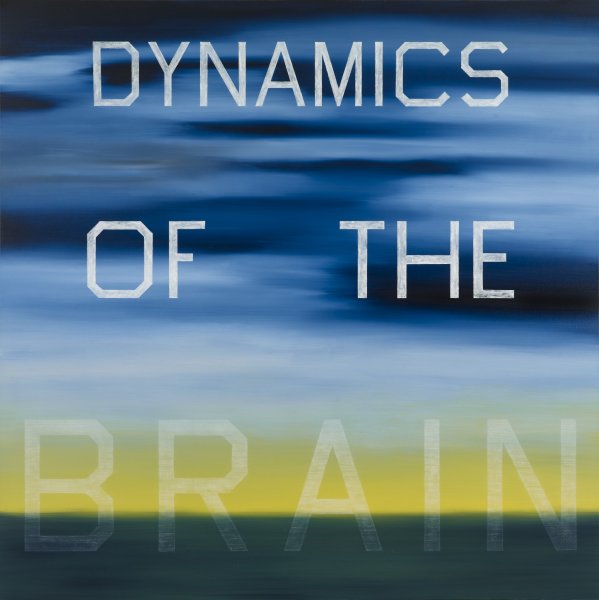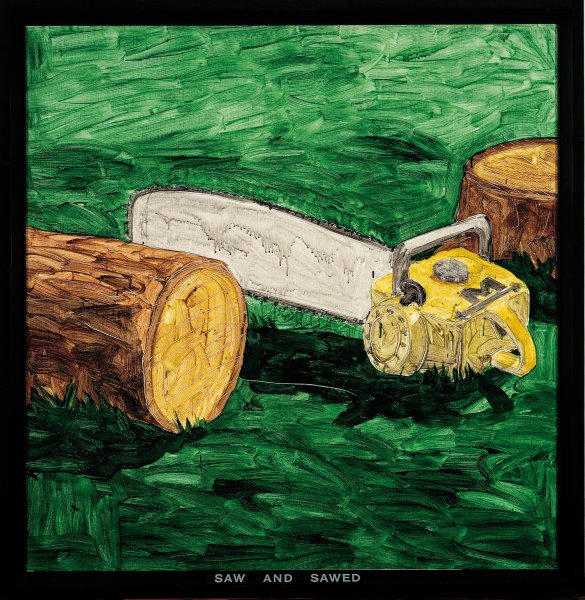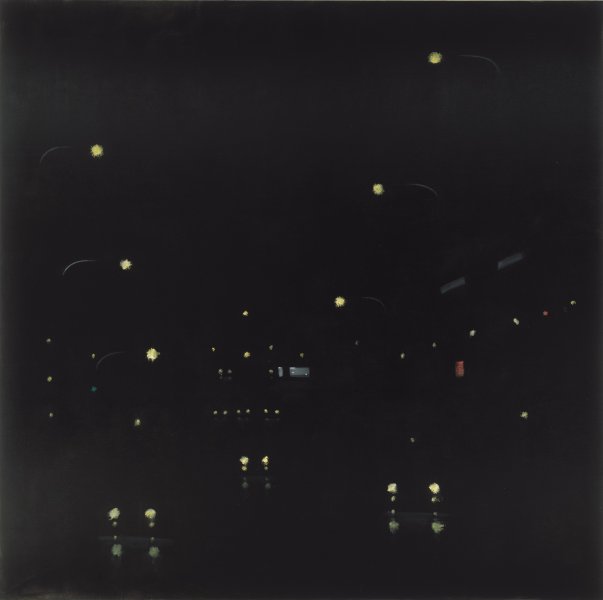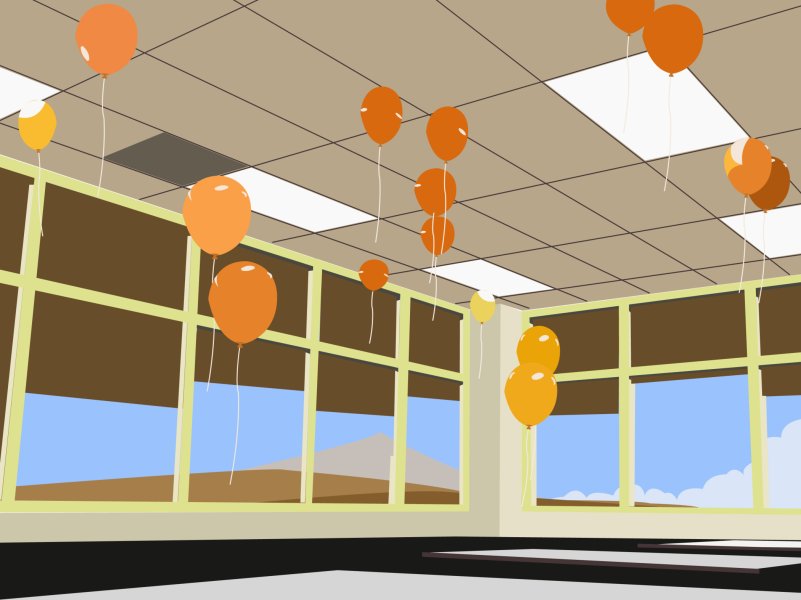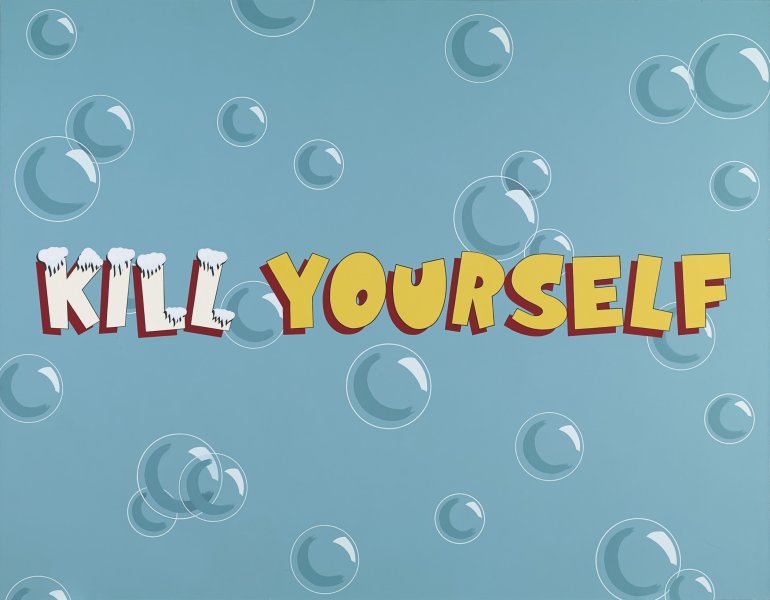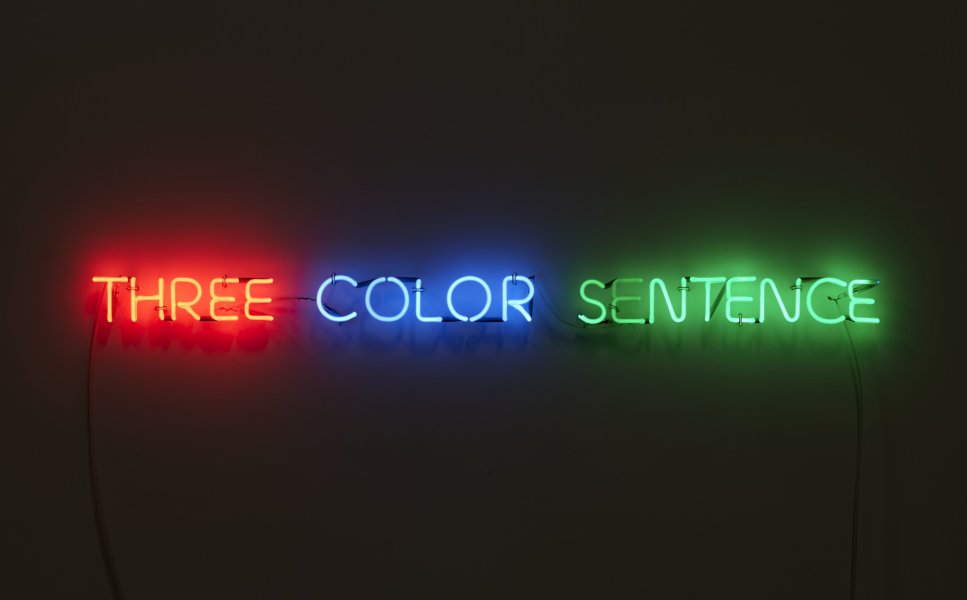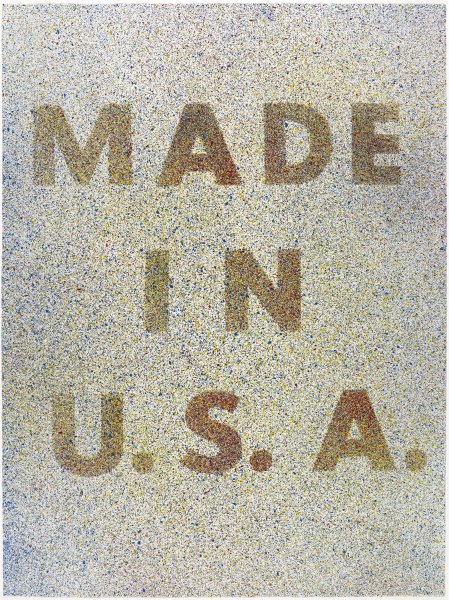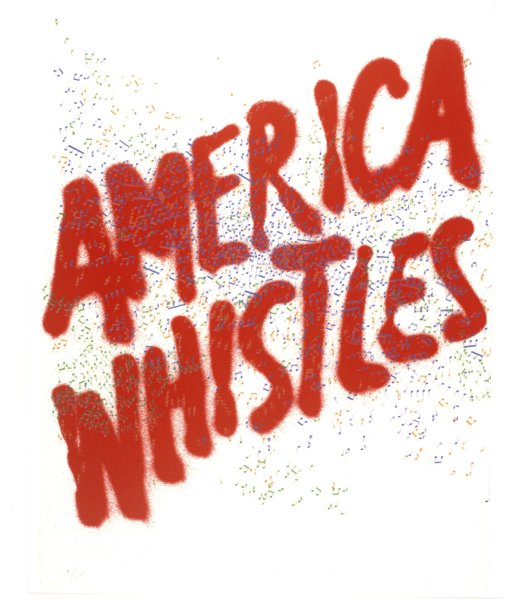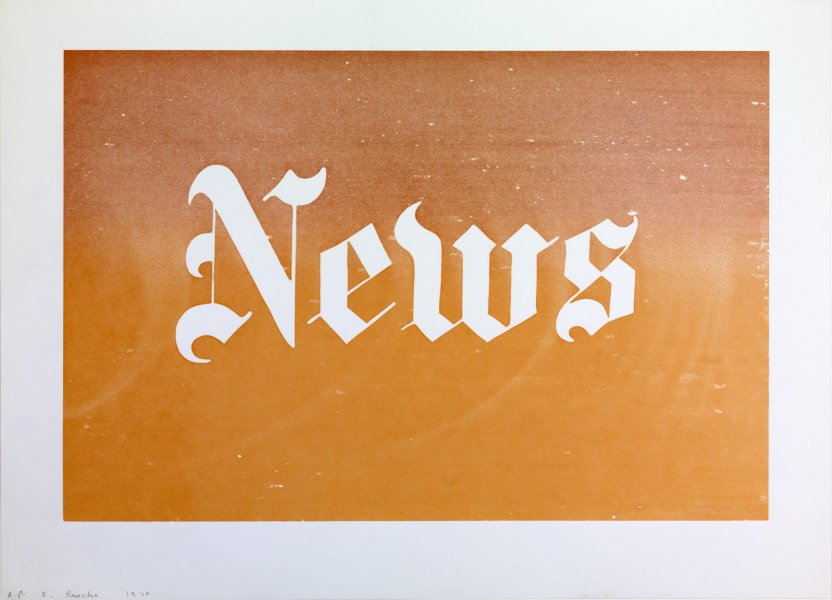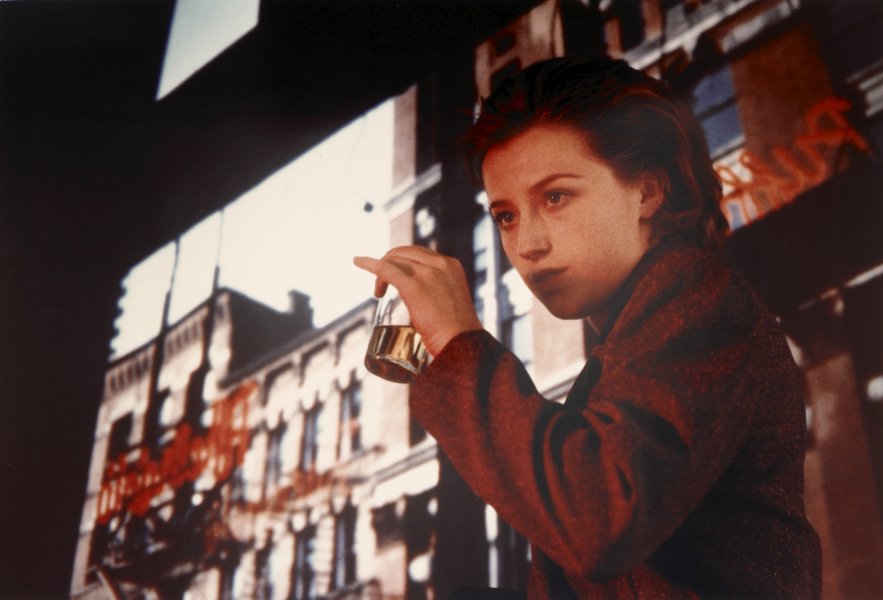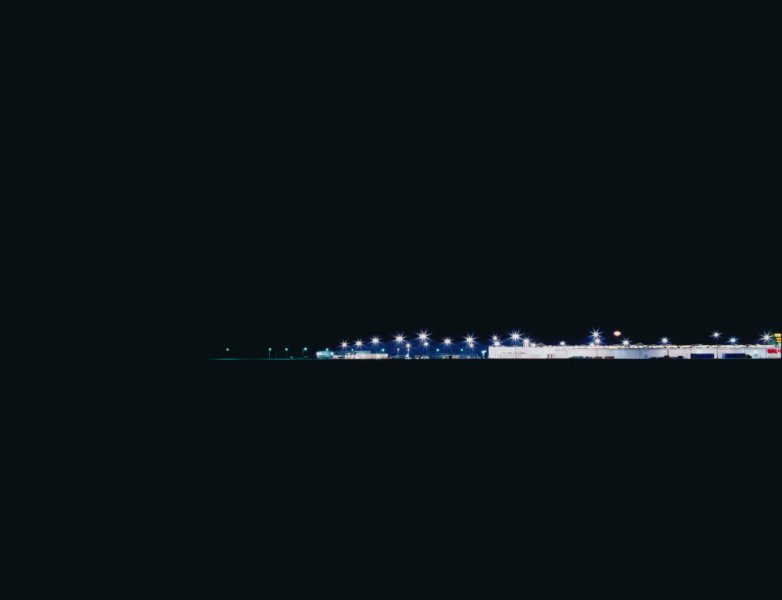WALL ROCKETS: Contemporary Artists and Ed Ruscha
Friday, July 24, 2009–Sunday, October 25, 2009

Installation view of WALL ROCKETS: Contemporary Artists and Ed Ruscha with Ruscha's WALL ROCKETS, 2000, on the left. Photograph by Tom Loonan.
1905 Building
The premise of WALL ROCKETS: Contemporary Artists and Ed Ruscha, organized by Lisa Dennison and originally on view at the FLAG Art Foundation in New York City, could have been defined simply as an artist and his sphere of influence.
WALL ROCKETS took its title from a work by Ed Ruscha of the same title depicting a majestic mountain range of snow-capped peaks amidst a deep blue atmosphere. The words “WALL ROCKETS” cut through the center of the image, exemplifying the artist’s characteristically simple yet confounding juxtaposition of image and text. Using this image as a metaphor, the exhibition included works by artists who have been influenced directly by Ruscha, as well as those who share some of his artistic tendencies, particularly his use of text and imagery and his fusion of Minimalist, Conceptual, and Pop elements. These range from his friends (childhood friend Joe Goode, celebrity friend Dennis Hopper) to artists similarly working with a conceptual use of language (John Baldessari, Barbara Kruger, Keith Tyson), a sense of humor (Tom Sachs, Joseph Grigely and Amy Vogel), an interest in Surrealism (Robert Therrien, Aya Uekawa, Charles Ray), and many who have explored and interpreted Ruscha’s unique sense of the Los Angeles landscape, both natural (Florian Maier-Aichen, Thomas Scheibitz) and urban (Mark Bradford). These are just a selection of the many different artists whose inclusion in the exhibition, combined with the artist’s own work, painted a complex and nuanced portrait of Ruscha’s life and work. For the Albright-Knox’s installation, the exhibition was augmented by related works from the museum’s collection.
An artist’s influence only reveals itself over time—in younger generations who absorb and respond to the work, and in the ability of the work to remain fresh and relevant as it ages. Ruscha’s oeuvre has this quality of persistent relevance: through the incorporation of image and text into a unique vernacular, the artist generates an ambiguous psychological landscape that is alternately mystifying and disconcerting and poses comedic, perplexing, and profound questions about the meanings ascribed to words and images.
The exhibition was organized by Lisa Dennison and was originally on view at the FLAG Art Foundation in New York City.

